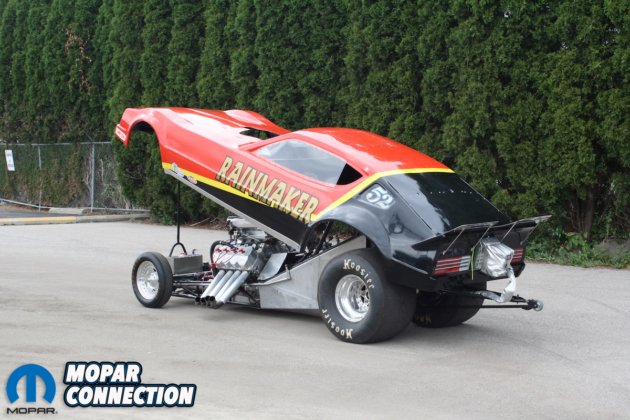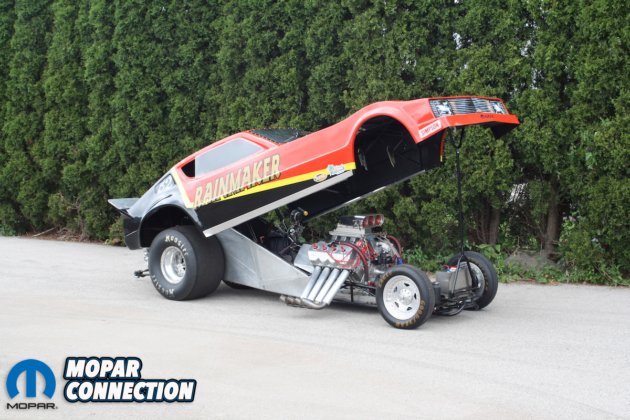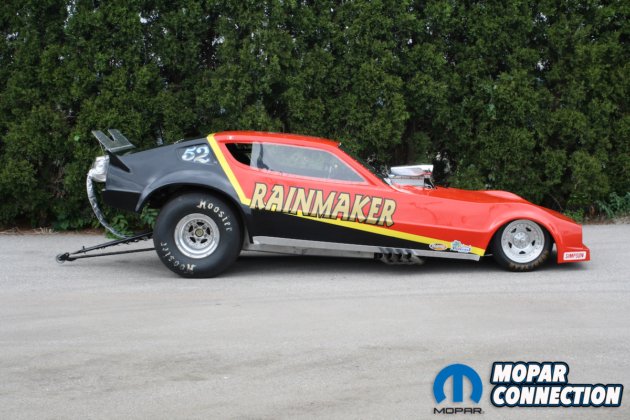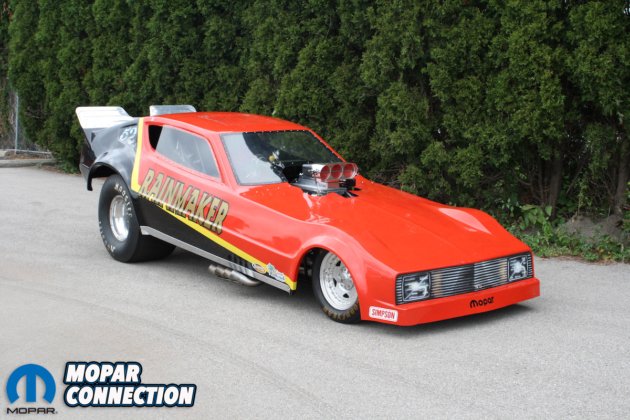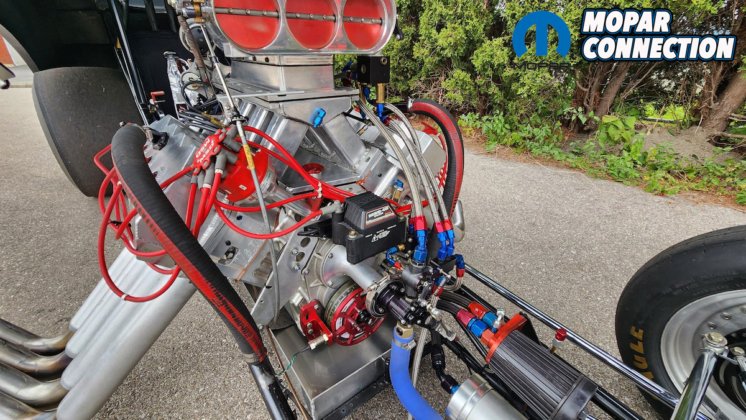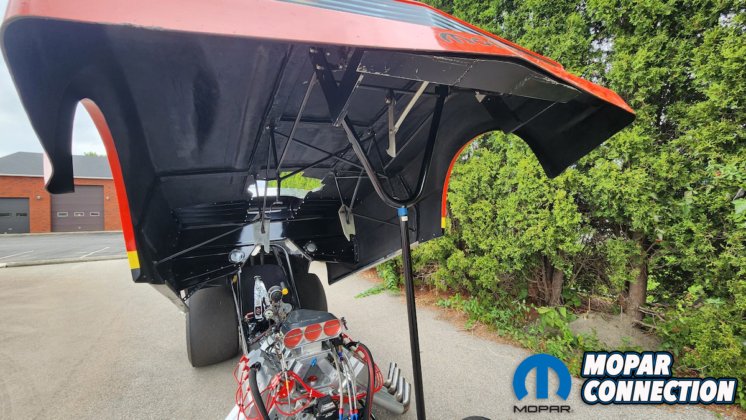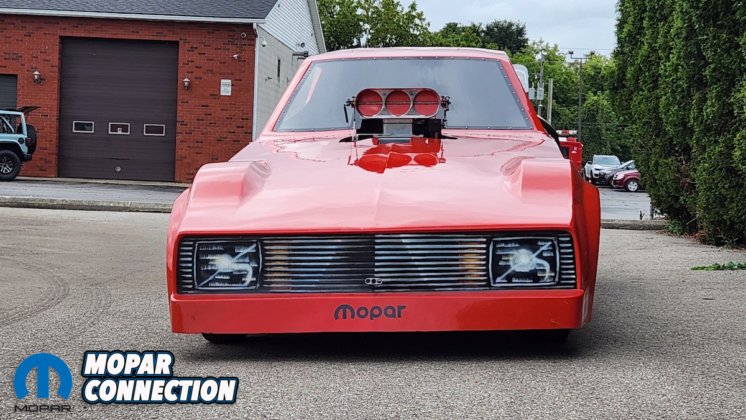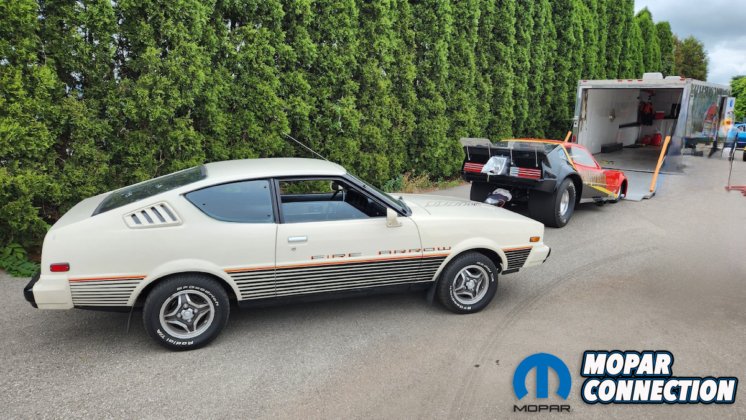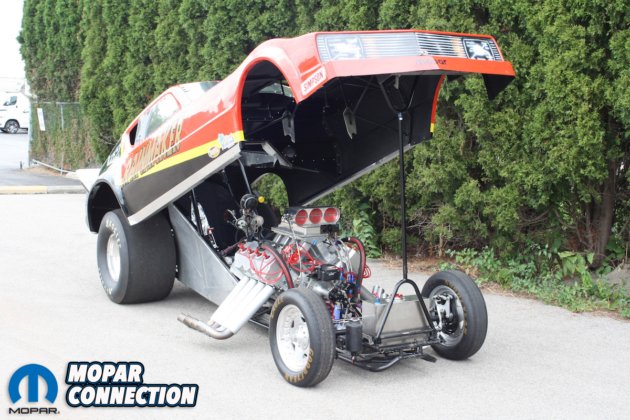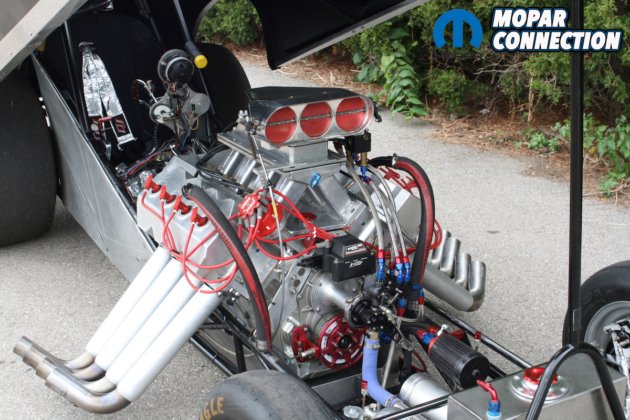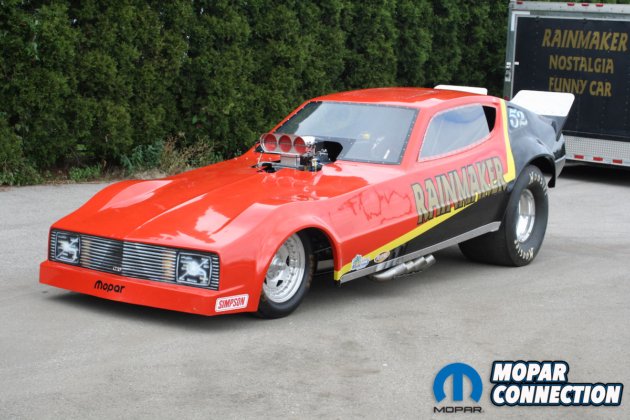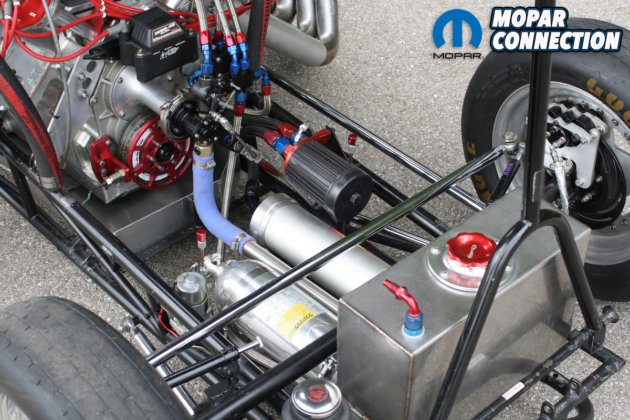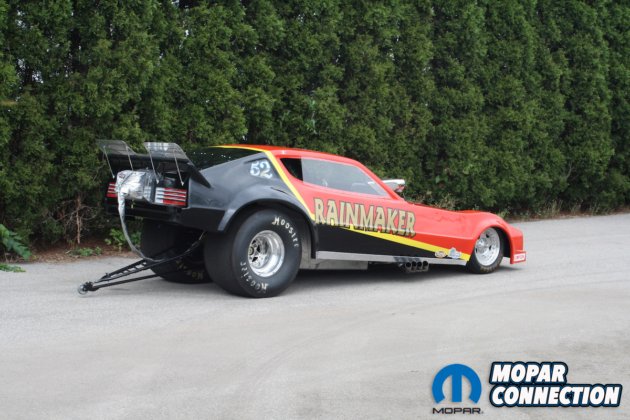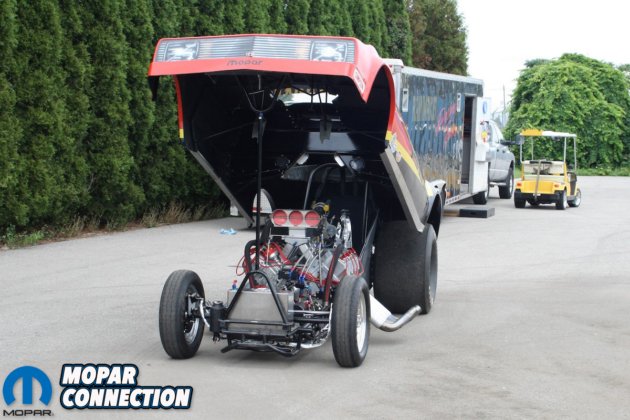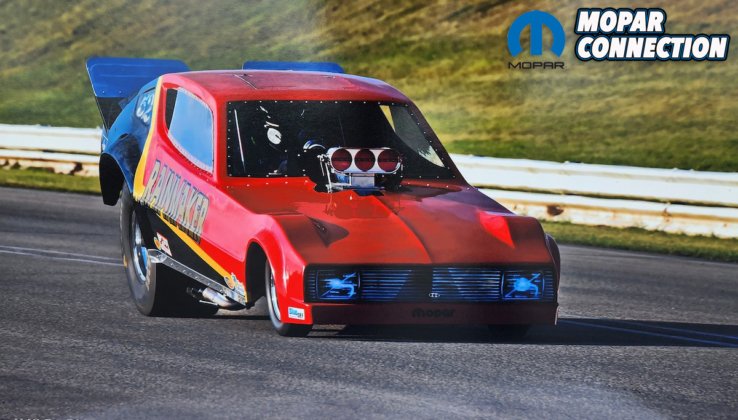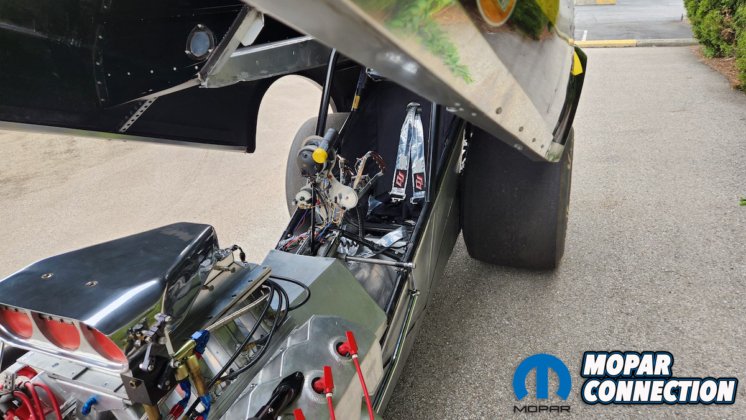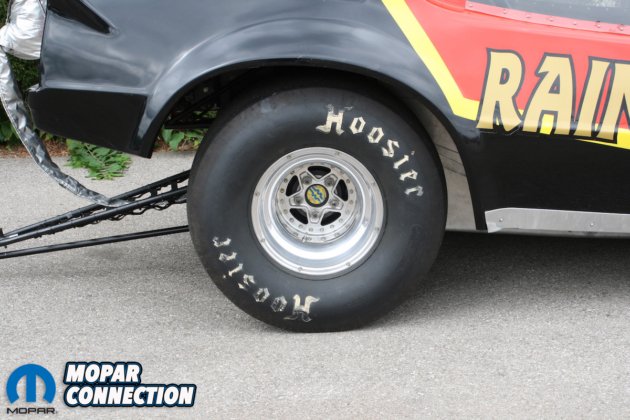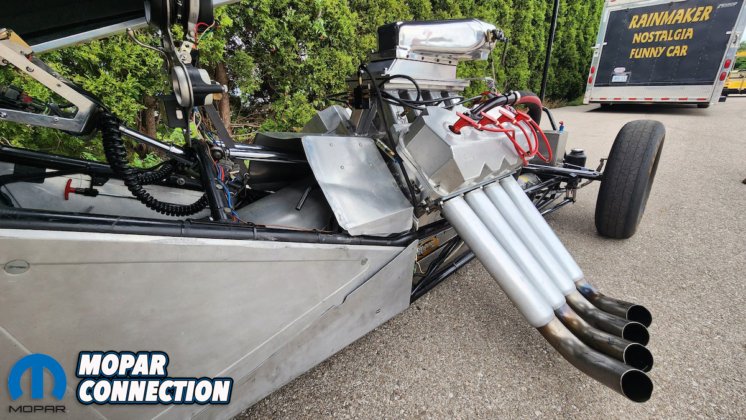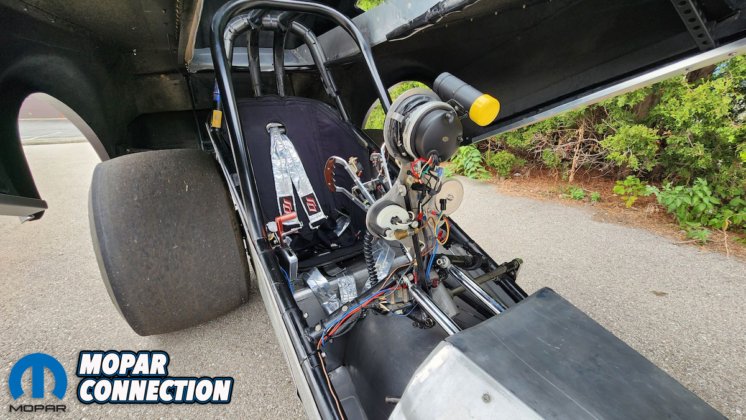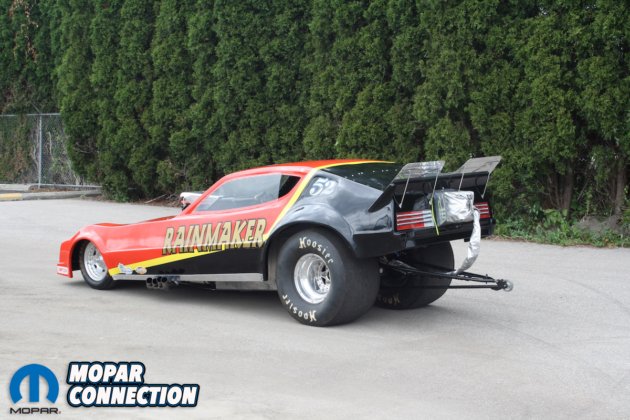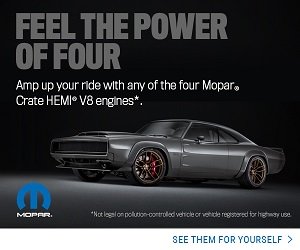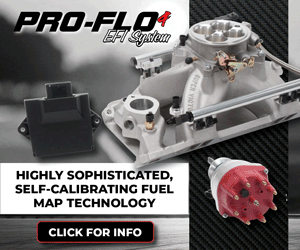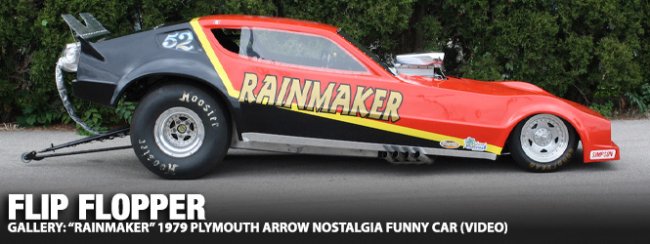
Since its inception in the late 1940s, drag racing has grown to be one of the most popular motorsports. The first “funny cars” appeared in the mid-1960s when modified wheelbase cars were combined with horsepower from Top Fuel dragsters. The term “funny car” was attributed to Fran Hernandez, the racing director of Mercury.
The “Funny Car” was created by moving the center of gravity towards the rear and adding more weight to the rear wheels. This allowed racers to enhance the traction of bias-ply slick tires by altering the wheelbase. They were dubbed “funny” because their heavily modified appearance deviated from the stock look. Adjustments to the wheelbase were made to maintain the standard gap between axle centers, improving traction for the narrow, 7-inch-wide drag slicks required by NHRA rules.

The 1964 Dodge 330 Max Wedges, dubbed the “Dodge Chargers,” were the first of the “funny-looking cars.” They made their debut at the San Diego Raceway in March 1964. In the Super/Factory Experimental (S/FX) class, Funny Cars began as stockers and were essentially exhibition vehicles at first; the NHRA viewed them as a fleeting fad, but we know that was not the case.
The evolution of the Funny Car saw a shift towards flip-top fiberglass bodies known as “floppers.” This trend was initiated by Jim Lytle’s Allison V-1710 aircraft engine-powered, modified 1934 Ford Tudor, dubbed “Big Al II,” which set the precedent for all subsequent flopper bodies.
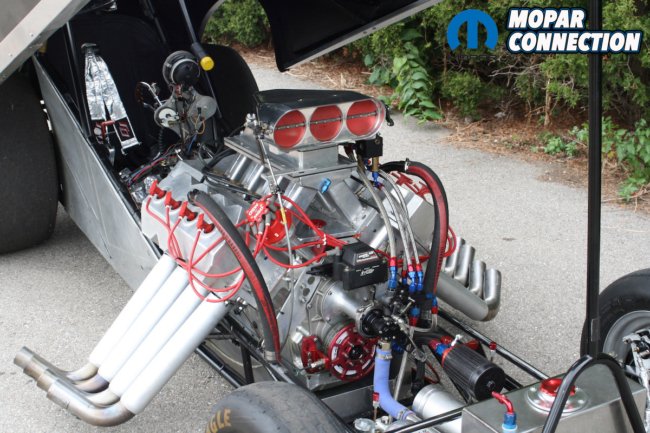
A Don Nicholson’s flip-top 1966 Mercury Comet, with its tubular chromoly frame, one-piece fiberglass flip-top body, built on a stock 116-inch wheelbase with stock proportions, a fuel-injected Cammer engine, and a three-speed automatic mounted amidships, changed everything. This completely revolutionary approach to replacing the acid-dipped, fiberglass-draped, altered-wheelbase first-generation of factory and homebuilt Funny Cars.
The “flopper”-bodied Comets were extremely successful in the hands of Chrisman, Kenz and Leslie, and Eddie Schartman; at the 1966 World Final, Schartman became the NHRA’s first official Funny Car champion.
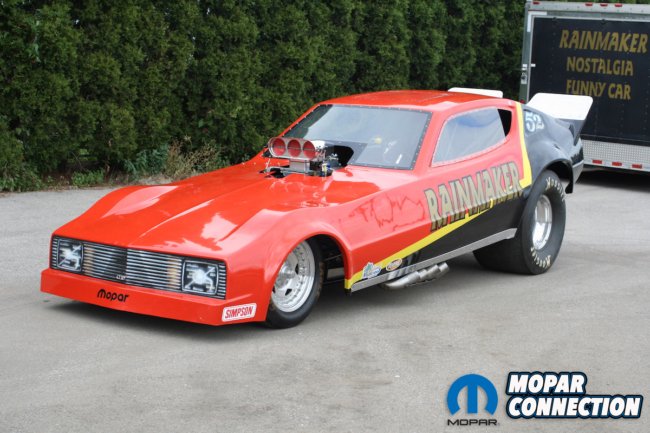
These impressive and vibrant machines captivated George Monohan in the late 1960s and 1970s. George, born in 1956, discovered and became interested in drag racing in the late 1960s. To fuel his passion, George read as many magazines as he could get his hands on, including Hot Rod, Car Craft, Popular Hot Rodding, and others.
ABC only aired the occasional Wide World of Sports segment, and there was no social media or internet. “The wild-looking funny cars, shown in beautiful color action pictures, were the coolest craze,” George said. These pictures inspired George to declare, “Someday, I want to drive a funny car.”
It was in 1978 that George was finishing up at university, and he had saved up enough money to buy a cool looking 1978 Dodge Arrow 2 door hatchback. George grew up in a Chrysler car family and would see these sporty economy cars made by Mitsubishi on the Chrysler dealer lots, as they were being imported and sold on the Dodge (Canada) and Plymouth (USA) names.
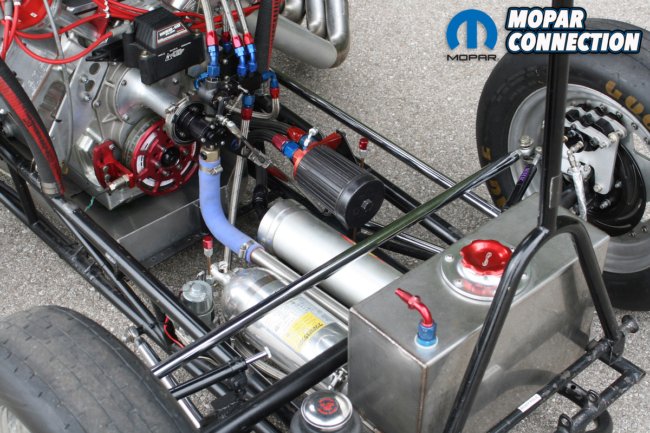
The Arrow was Chrysler’s answer to the Ford Pinto and Chevy Vega. Chrysler had purchased an interest in Mitsubishi in 1971, and it only made sense for them to use this line to sell small economic cars at their dealerships. George’s car had a 2-liter engine with a 5-speed manual transmission that put out 94 horsepower at 5,200 rpm.
George observed that drag racers began adopting the Arrow body style for funny cars around 1977, which was used until the mid-1980s. Notable drivers included Raymond Beadle, Gene Snow, Ed McCulloch, Kenny Bernstein, and Tommy Ivo, among others. George had the good fortune to witness Don Prudhomme’s 1979 Army Arrow at Dragway Park in Cayuga. He thought to himself, “That is the coolest thing ever.”
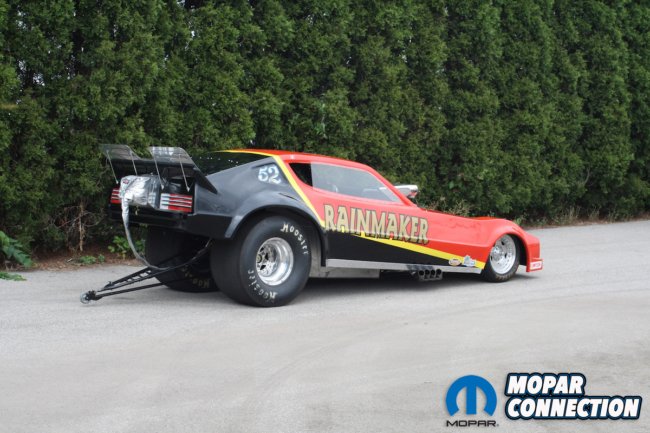
Well, time marched on, and George’s Funny Car dreams stayed just that, because of careers, marriage, children, and home ownership. The only way he got his Funny Car fix was through Diamond P sports videos of Funny Cars and drag racing in general, through the 1980s and 1990s.
George bought his first muscle car in 1986, a 1973 Plymouth ‘Cuda 340 with a 4-speed manual. Things changed for George in 1987, when, at the age of 31, he competed in the Canadian Mopar Nationals at Dragway Park Cayuga.

George remembers the event attracting a multitude of cars to a Mopar-exclusive race. His ‘Cuda was one of the 65 vehicles competing in ET3. It was his debut on the drag strip, and to add to the challenge, he had to navigate it with a four-speed. Undoubtedly, this was a daunting task for a novice.
George says, “I had a lot of beginner’s luck, for sure, because I made it all the way to the final, which I lost. But man, what a blast, and I was hooked!” So, over the next seven years, he began to make various modifications to the 1973 ‘Cuda as his meager budget allowed, and he attended numerous Mopar drag race events, including the Mopar Nationals in Columbus, Ohio, in the United States.
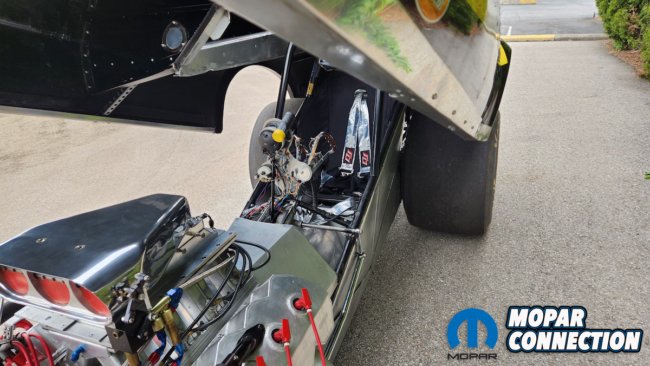
George finally realized that his ‘Cuda was transforming from a street car to a racing car, but it was neither a good street car nor a good race car. It was simply too heavy to be a good drag car, and the modifications did not make it an easy car to drive on the street. He enjoyed experimenting to see what he could do to make it faster, again on a tight budget, but eventually concluded that he had reached the end of the line in terms of a faster racing car.
In the summer of 1993, while attending a Mopar swap meet at St. Thomas Dragway, George spotted something in the grass. It was an orange, yellow, and black 1979 Arrow Funny Car body, just the body all painted, airbrushed lights and grille with a windshield, and all the tin in place, pretty much like the car you see on these pages. George stated, “It looked great, was in new condition, and the best part was available for just $1500.00. That included delivery, so I just had to have it!”
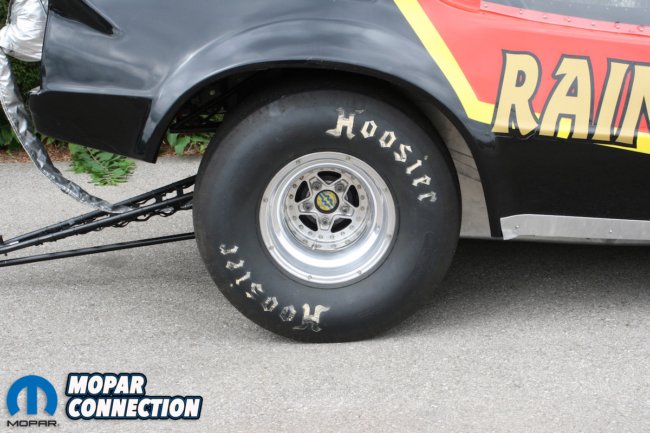
In 1994, George sold the ‘Cuda that later became the giveaway car at Moparfest, Canada’s largest all-Chrysler car show. The proceeds from the sale helped finance the construction of the Arrow Funny Car. For those unfamiliar, Moparfest annually gives away a car to participants of the show.
The original idea was to start with a brand-new LJ Chromoly chassis that he purchased from Burlington, Ontario. Next, George needed to locate what he needed to build this dragster. It eventually became a combination of brand-new, salvage yard, and swap meet parts. The original 440 cubic inch engine block was sourced from a 1977 Chrysler New Yorker.

Adhering to budget constraints, the refurbished 440 Chrysler big block engine runs on pump gas, paired with a 2-speed Powerglide transmission and a 9-inch Ford rear end. At this stage, the car’s weight is 1800lbs excluding the driver. The body only weighed 186 lbs. The original version could achieve mid 9-second runs at 140 mph, and for George, transitioning from a 13-second ‘Cuda to a 9-second drag car felt incredibly fast.
George encountered a problem with the gas-burning version running hot, which led to complications with the head gaskets. After a few seasons of dealing with this, he switched to an injected alcohol setup with tunnel ram and Enderie injector, which the Arrow liked and now runs in the high 8-second range, with no overheating issues. Well, almost no overheating.
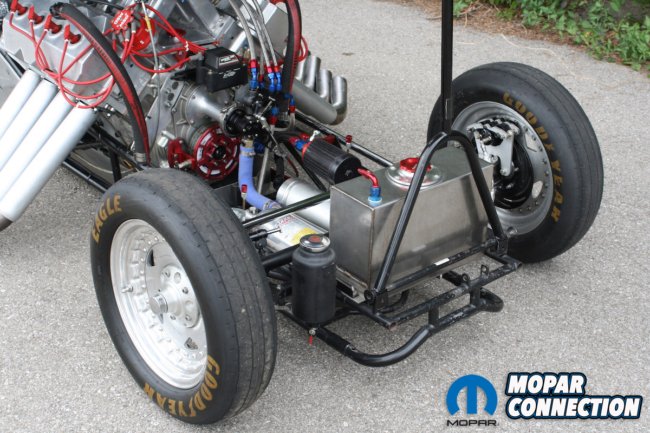
George was accustomed to running water through the engine to keep it cool, and it had never been an issue. However, one night at Grand Bend Motorplex, a delay on the track caused him to be held at the starting line with the engine running. As he sped down the track, everything appeared normal until he reached the 1000-foot mark, where the car suddenly fishtailed violently. “I saw the wall out of the side window and thought, ‘I can’t afford repairs, so I have to save it!'” With quick steering adjustments and several large fishtails, George managed to regain control of the car.
It turned out that being held at the starting line with the engine running caused it to overheat. When he reached the 1000-foot mark, the engine expelled water from the overflow tank onto one of the rear slicks. It was a swift realization that water was not suitable for his funny car.

It wasn’t long before George began running a series of Mopar Wedge motors, including a 500 cubic inch block with Aluminum Indy cylinder heads. This setup propelled him into the mid-8:50-second range at speeds around 154 mph. George’s need for speed persisted, yet his budget couldn’t accommodate the numerous upgrades needed for a complete alcohol setup. However, he managed to make it halfway there.
George came across a Brad Anderson billet aluminum Hemi block with a repaired window, a term used to describe a block that has been breached by a rod, creating an unintended “window” due to a catastrophic failure. Additionally, he acquired a set of billet Veney aluminum cylinder heads and various other parts to assemble the present configuration, a 540 cubic inch Hemi.

This engine features 2.60-inch Titanium Victory intake valves, 2.10-inch Victory exhaust valves, a Crower billet 4.5-inch stroke crankshaft, GRP aluminum rods, JE pistons, a Casale gear drive, a Plueger oil pump, Stage V 1.7 ratio rockers, an 850 Crane Roller Cam, an ATI A Fuel Dragster Harmonic Balancer, and Hedman Husler 2.5-inch Headers.
George discovered a custom-made tunnel ram intake from a tractor pull truck available online. The short block was constructed by the late Fred Speight. This setup generated 1000 horsepower. This car does the quarter mile in 7.75 seconds at speeds exceeding 170 mph.
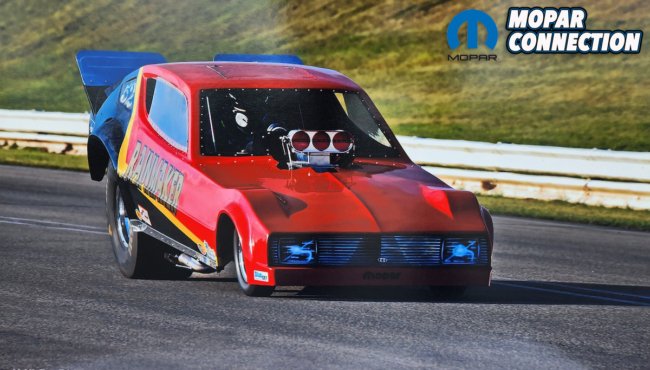
The Arrow is equipped with a JW Ultraglide transmission featuring a transbrake, paired with a Neal Chance 9-inch stall converter that’s rated for 6500 rpm, operated by a Quarter Pro Shifter. It utilizes a Strange 9-inch rear aluminum center section axle with 4:56 gears.
The power is transmitted to the rear tires through a Mark Williams lightweight spool and 40-spline axles, with the rear tires being 33.5x17x15 Hoosier Drag slicks and the front tires 24×5.5×15 Goodyear front runners. For deceleration, it’s fitted with Wilwood disc brakes.

You might be curious about the origin of the name Rainmaker. George explained that it seemed to rain every time we debuted it. Quite straightforward. As time passed, I found myself jokingly accused of causing several rainstorms at racetracks.
At last, George can proudly declare that he’s behind the wheel of a Funny Car, fulfilling a long-held dream. He secured the runner-up position at the 2012 U.S. Nostalgia Funny Car Nationals in Marion, Ohio.



